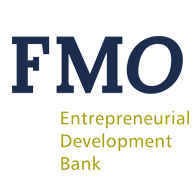We need to know and understand other industries to be able to adapt to the disruptive transformation in our own business. Airbnb, Uber and Netflix have disrupted the travel, the taxi, and the TV and video rental industry respectively. The energy sector, water, health, education and so on, they are or will be disrupted in one way or the other. Consumers will benefit. Perhaps even more so in emerging markets.
We all know how many countries in Africa skipped the fixed telephone network and leapfrogged to mobile phones.
We all know how many countries in Africa skipped the fixed telephone network and leapfrogged to mobile phones. Now smartphone penetration is growing very fast in emerging markets. They are even replacing PCs, laptops or tablets.
As a result, internet usage is rising rapidly, in particular amongst youth and low-income populations. The International Telecommunications Union (ITU) shows that internet connectivity has grown from 30% of the global population in 2010 to 48% in 2017.
In 2017 70% of the world’s youth (aged 15-24) are online confirmed ITU. In Least Developed Countries 20% of the population is youth and they represent 35% of total internet users. In Developed Countries 11% of the population is youth, representing 13% of Internet users. According to Visual Networking Forecast (VNI), internet connectivity will continue to rise, reaching more than half of the global population by 2020.

| At the 2018 Making Solar Bankable event: the digital revolution spurs new technologies, products/services, and business models that (are expected to) follow exponential and disruptive growth patterns. |
At the same time however, there are still many people in emerging markets who are unbanked. For example, in 2017, over half of the Chinese population uses internet according to a report issued by Chinese government agency China Internet Network Information Centre (CNNIC), while more than one fifth is unbanked as per Financial Inclusion Data from 7the World Bank. Imagine the vast opportunities in emerging markets to increase access to financial services for people on low incomes and how this in turn will impact every industry?
I have seen many different slides, showing the rapid declines in solar energy prices and the steep growth in megawatts of solar energy produced. Although the efficiency of solar cells has not improved exponentially, prices dropped more than 200% in the last ten years according to Bloomberg New Energy Finance. And this trend is expected to continue.
If look at this development and the vast opportunity to increase access to finance in emerging markets then you can only conclude that this is the moment to make solar power bankable!
Can we expand sustainable and affordable solar energy in Africa and Asia exponentially? Imagine what this means for hundreds of millions of people? And the economic opportunities this will offer.
Off-grid energy models are growing rapidly. We are gaining a better understanding which of these models can be scaled and how.
Off-grid energy models are growing rapidly. We are gaining a better understanding which of these models can be scaled and how. At the same time, we recognize that this means a challenge for the traditional on-grid models and project finance structures in the market.
The off-grid solar energy sector has seen impressive growth since 2010 and is now providing new or improved electricity access to an estimated 73 million households, or over 360 million people, still demonstrating only a modest penetration rate of 17% of the global potential market of off grid or unreliable grid households. [Data source; Off Grid Solar Market Trends report 2018].
Beyond the initial stand-alone pico solar lanterns, the off grid sector has expanded its offerings with Solar Home Systems often distributed based on Pay-as-you-Go business models as well as with energy efficient appliances for residential or, increasingly, productive use.
Distributed energy solutions for both households and businesses are literally becoming more and more powerful, in some cases even offering a credible and permanent alternative to on-grid power. This presents challenges to the traditional on grid models and project finance structures in the market but also opportunities as the boundaries between what were two very distinct worlds before seem to be blurring these days and a gradual convergence seems increasingly real.


